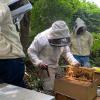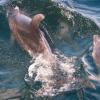Community Awareness and Livelihood Opportunities at the Pointe Sable Environmental Protection Area (PSEPA), St. Lucia Research Paper
The biophysical framework which previously governed the assessment of coastal and marine resources is perceived as no
longer adequate as the intrinsic ecological and economic values of coastal resources are becoming even more apparent. As a result
the direct relationship between the socio-economic activities of a community and the effective management of coastal resources
cannot be overemphasised and needs to understood and assessed along these lines. The Socio-economic Monitoring Framework
(SocMon) was therefore developed in order to determine the most effective management strategies and was specifically designed to
build capacity in socio-economic monitoring for coastal resources. SocMon facilities site-level data collection with the potential to
inform national, regional, and international databases while at the same time establishing sustainable collaboration among the
various stakeholders at all levels.
The Pointe Sable Environmental Protection Area (PSEPA) is highly biologically diverse, possessing essential resources which
include mangroves, coral reefs, sea grass beds, and dry forests with their respective flora and fauna. Coupled with its rich biodiversity, PSEPA is also steeped in culture and history that is of great significance to the Saint Lucian society. Therefore, PSEPA can offer
valuable contributions to the local economy and to the national development of the country.
The monitoring goal of the study was to determine the level of awareness of the Vieux Fort Community of the Pointe Sable
Environmental Protection Area (PSEPA) as a protected area and the existing and potential livelihood opportunities in the area. The
selection of the SocMon Team was based on individual’s specialized skills and in some cases the organizational affiliations of team
members. The methods of data collection involved key informant interviews and household surveys. Following the recommended
sample size as provide in the SocMon Caribbean Guidelines and the distribution of household in the area, 114 households were
surveyed. Household surveys were conducted in groups of two and the format used was questionnaires.
Key informants were chosen primarily because of their involvement in activities (livelihood related or otherwise) within the
PSEPA. Seven key informants were interviewed, and the information gathered provided the basis for comparison with previous data
obtained. From the key informant interviews information on the illegal activates that are undertaken within the PSEPA were
indentified.
Despite limited knowledge of the PSEPA, there is the prevailing concept of intergenerational equity which could foster
collabortaion among the various stakehloder and ensure the sucessful protection and sustainable management of the PSEPA.
Educating the population on the rules and regulations that govern the protection and management of the PSEPA was seen as priority
and should be undertaken before any future development begins.
Area of Interest: St Lucia and
Year: 2012




